Through Waters Deep – Destroyer Tour: Below Decks
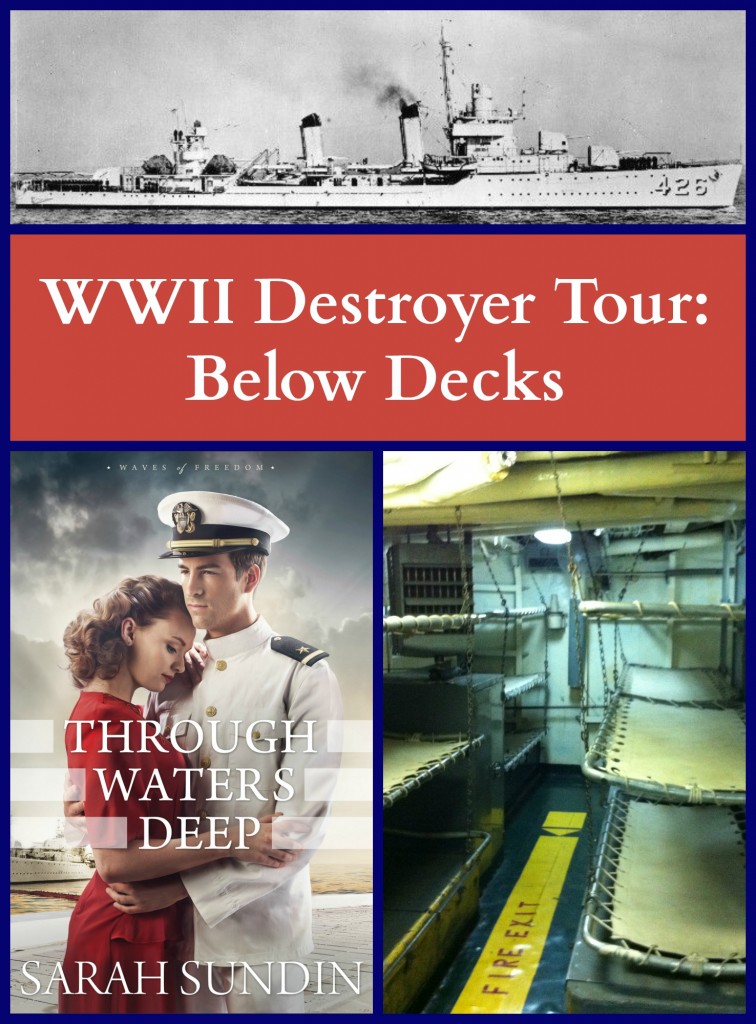 For over one hundred years, destroyers have served as versatile naval workhorses. In World War II, US destroyers escorted convoys, hunted submarines, fought surface battles, bombarded shore positions, rescued downed airmen and stranded sailors, and served as radar pickets to detect and fight incoming kamikaze flights.
For over one hundred years, destroyers have served as versatile naval workhorses. In World War II, US destroyers escorted convoys, hunted submarines, fought surface battles, bombarded shore positions, rescued downed airmen and stranded sailors, and served as radar pickets to detect and fight incoming kamikaze flights.
In my new novel Through Waters Deep, Ens. Jim Avery serves on a fictional Gleaves-class destroyer, the USS Atwood. While researching the Waves of Freedom series, I visited two World War II destroyers, the Fletcher-class USS Cassin Young at the Charlestown Navy Yard in Boston and the Gearing-class USS Joseph P. Kennedy, Jr. at Battleship Cove in Fall River, MA. Here you can see photos from my tours:
Part 1—Topside: the various destroyer classes, and a bow-to-stern tour of the main deck.
Part 2—Below Decks: living quarters and working stations.
Living Quarters
With 160-345 men on board a 340-390-foot-long ship, space was at a premium. Enlisted men slept in tiered cots, and even the captain’s cabin was Spartan.
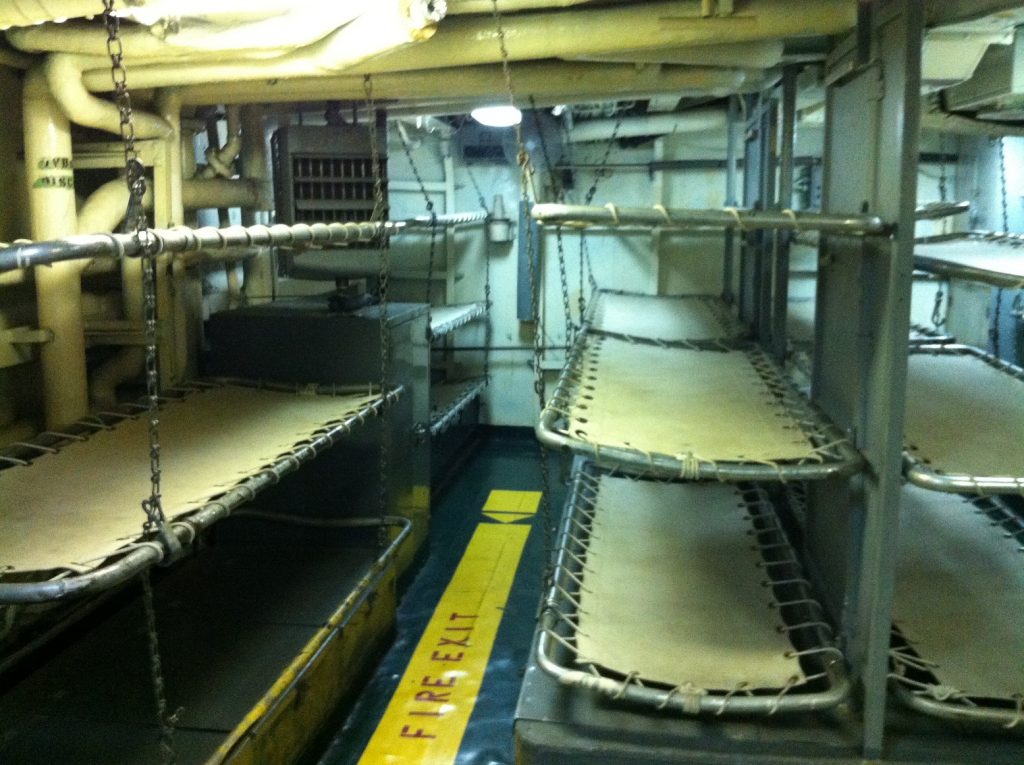
Enlisted men’s quarters on board destroyer USS Joseph P. Kennedy, Jr., Battleship Cove, Fall River, MA, July 2014 (Photo: Sarah Sundin)
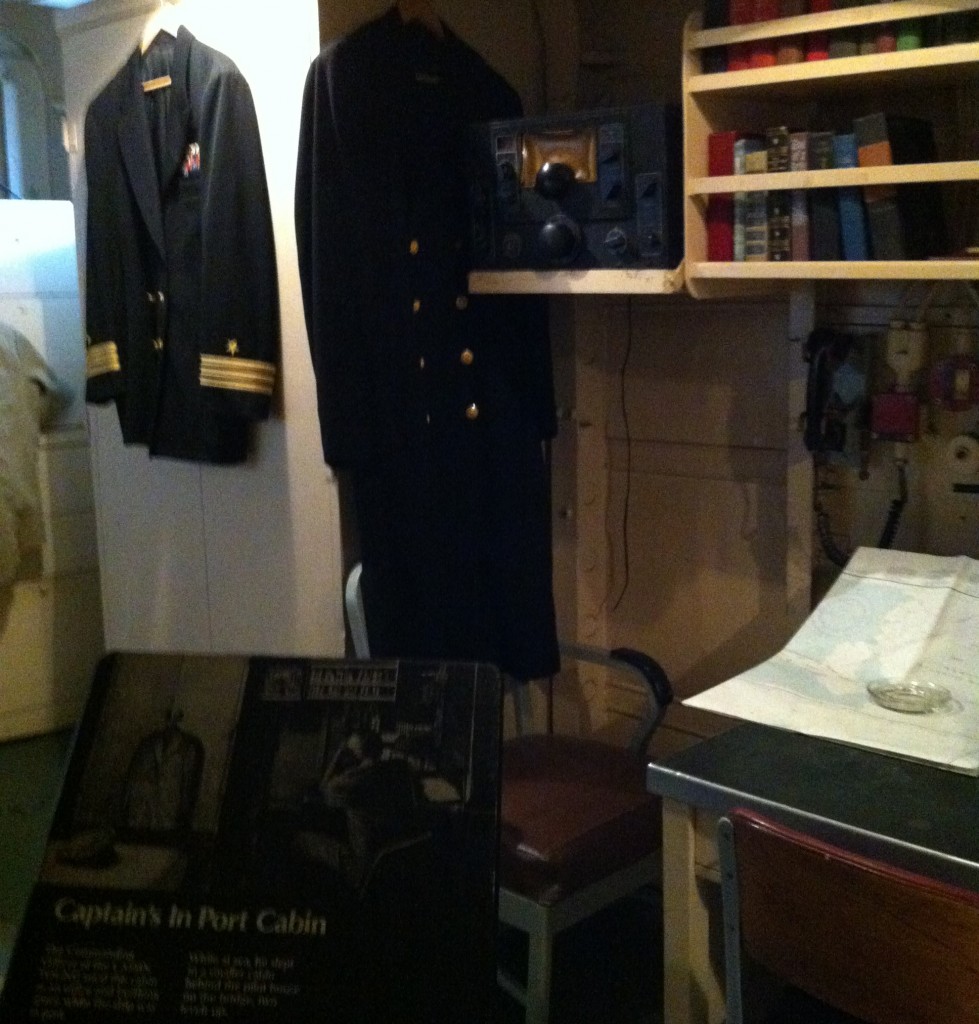
Captain’s in-port cabin, USS Cassin Young, Charlestown Navy Yard, Boston, July 2014 (Photo: Sarah Sundin)
The enlisted men ate in the mess, while the officers ate in the wardroom. Both the mess and the wardroom also served as social gathering areas, and in combat the wardroom was converted to a sick bay.
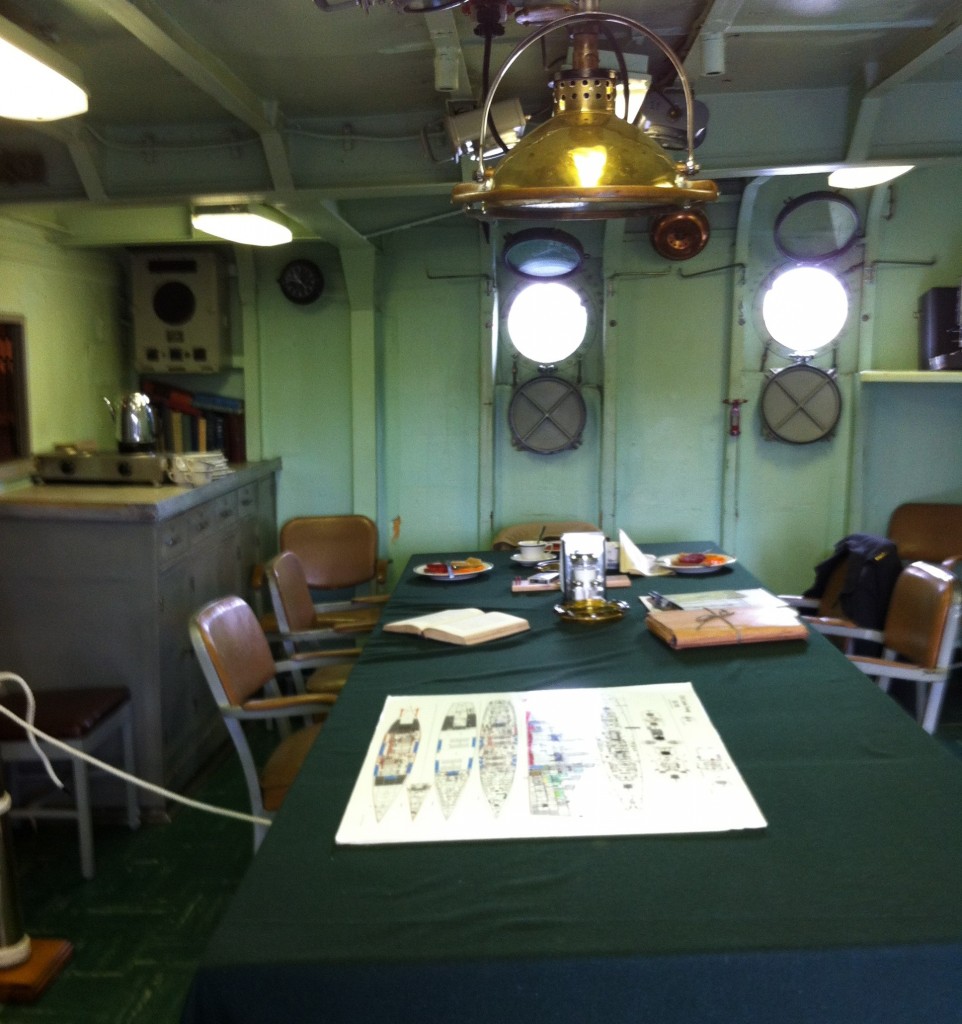
Wardroom, USS Cassin Young, Charlestown Navy Yard, Boston, July 2014 (Photo: Sarah Sundin)
Sailors at Work
Destroyers had a galley (kitchen for us landlubbers), laundry, and offices. In addition to their routine duties, all crewmen also had general quarters duties. The steward would man a gun, and the carpenter’s mate would serve on a repair party.
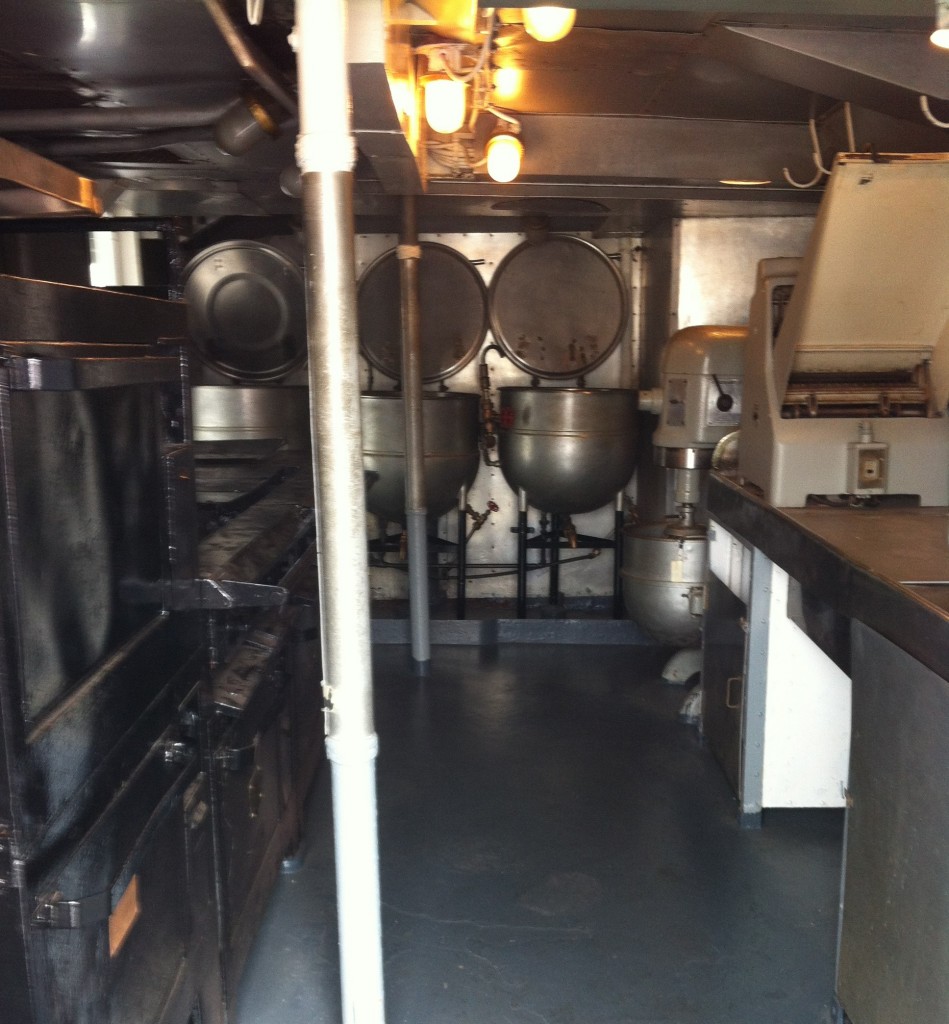
Galley, USS Cassin Young, Charlestown Navy Yard, Boston, July 2014 (Photo: Sarah Sundin)
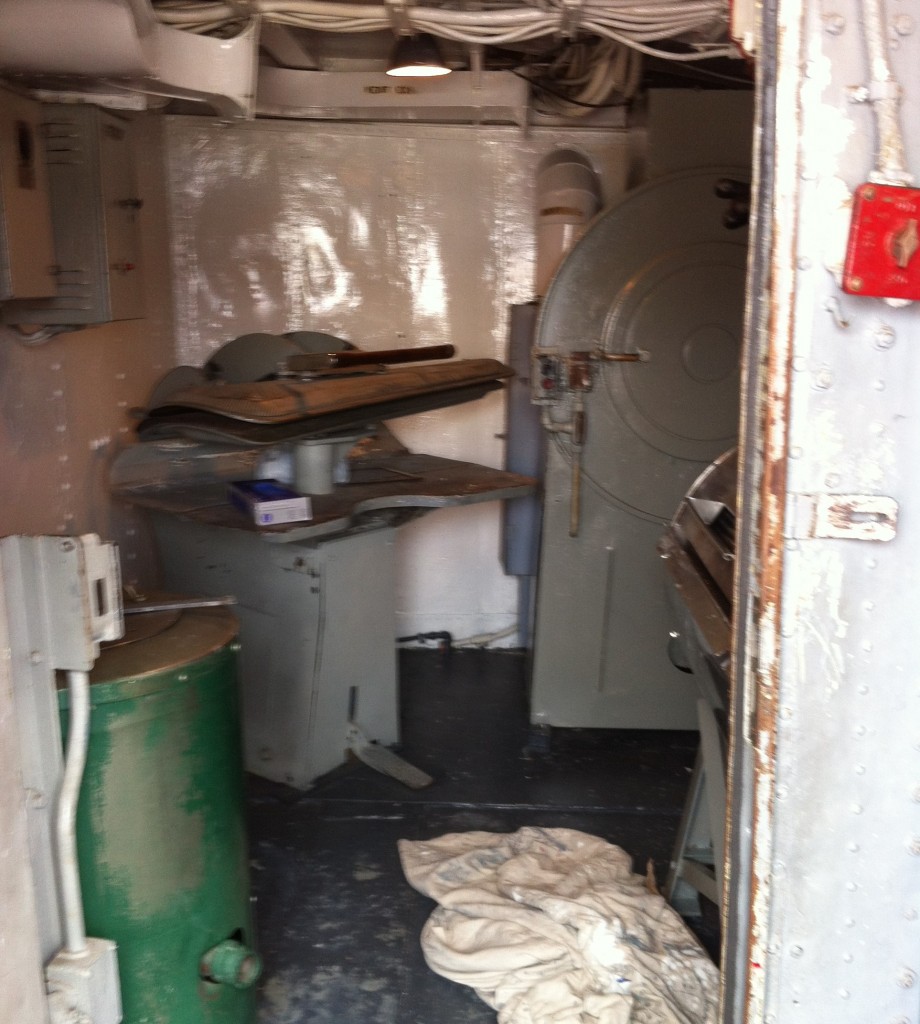
Laundry, USS Cassin Young, Charlestown Navy Yard, Boston, July 2014 (Photo: Sarah Sundin)
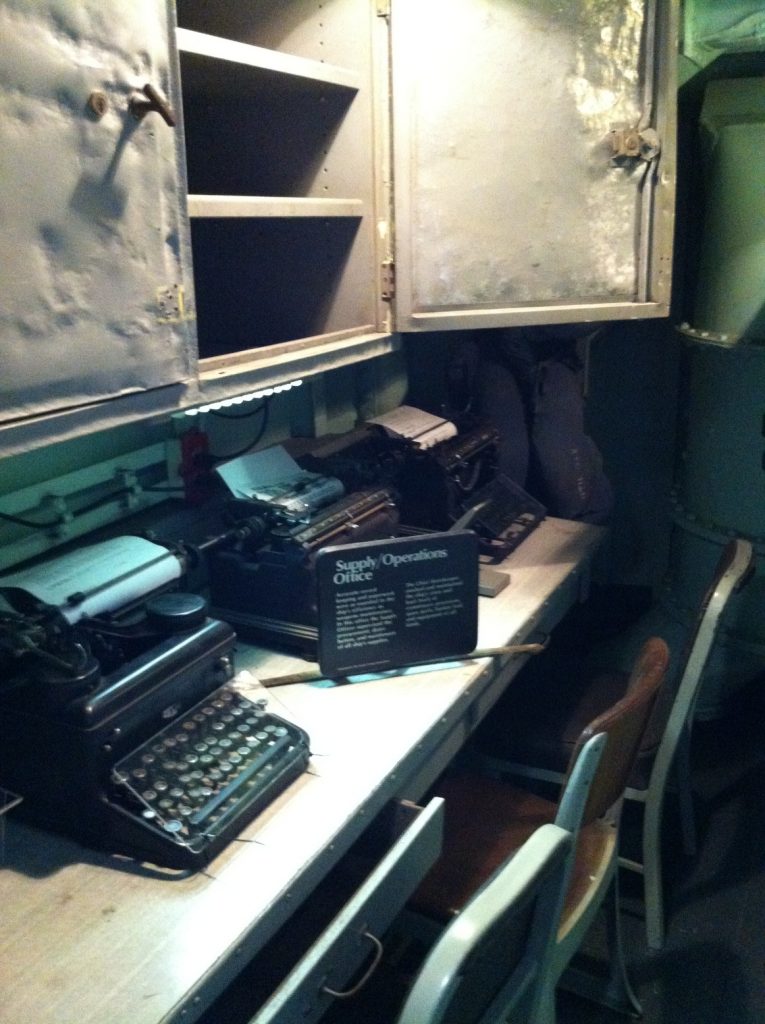
Supply/Operations Office, USS Cassin Young, Charlestown Navy Yard, Boston, July 2014 (Photo: Sarah Sundin)
The Bridge
Up in the pilothouse, the captain or the officer of the deck stood watch over the navigation team. The bridge housed the helm (for steering the ship), the engine order telegraph (communicates requested speed to the engine room), a gyrocompass, and other navigational and communications equipment. [Note: pictures below show Vietnam War-era equipment on the USS Joseph P. Kennedy, Jr.]
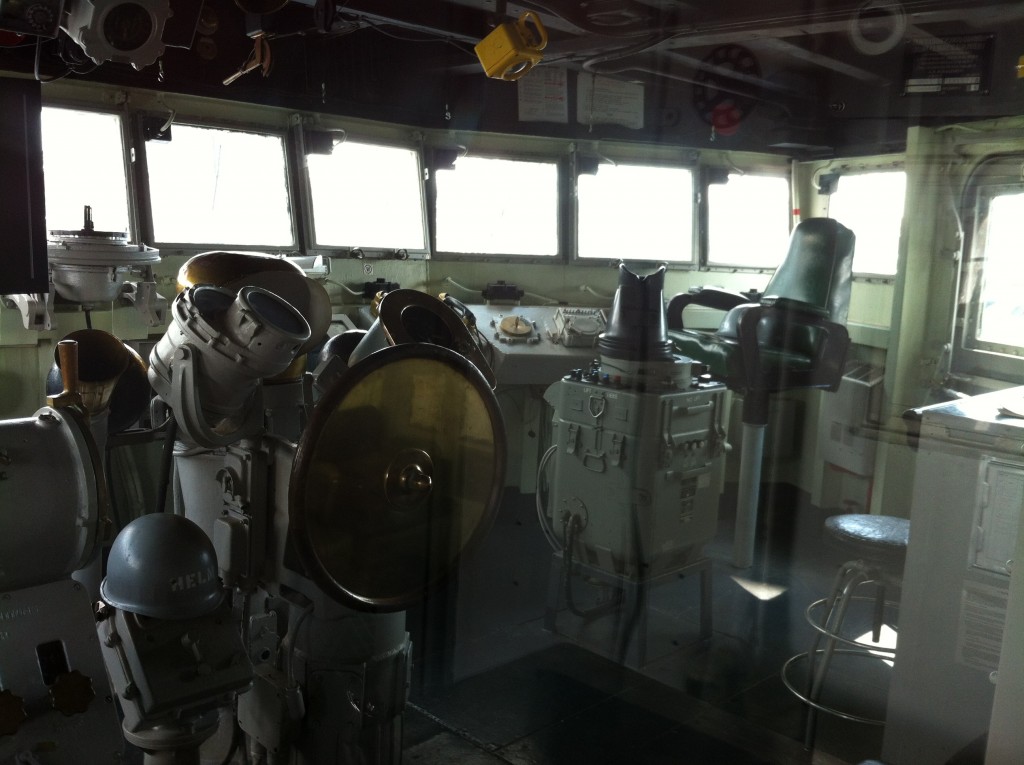
Starboard side of pilothouse, USS Joseph P. Kennedy, Jr., Battleship Cove, Fall River, MA, July 2014 (Photo: Sarah Sundin)
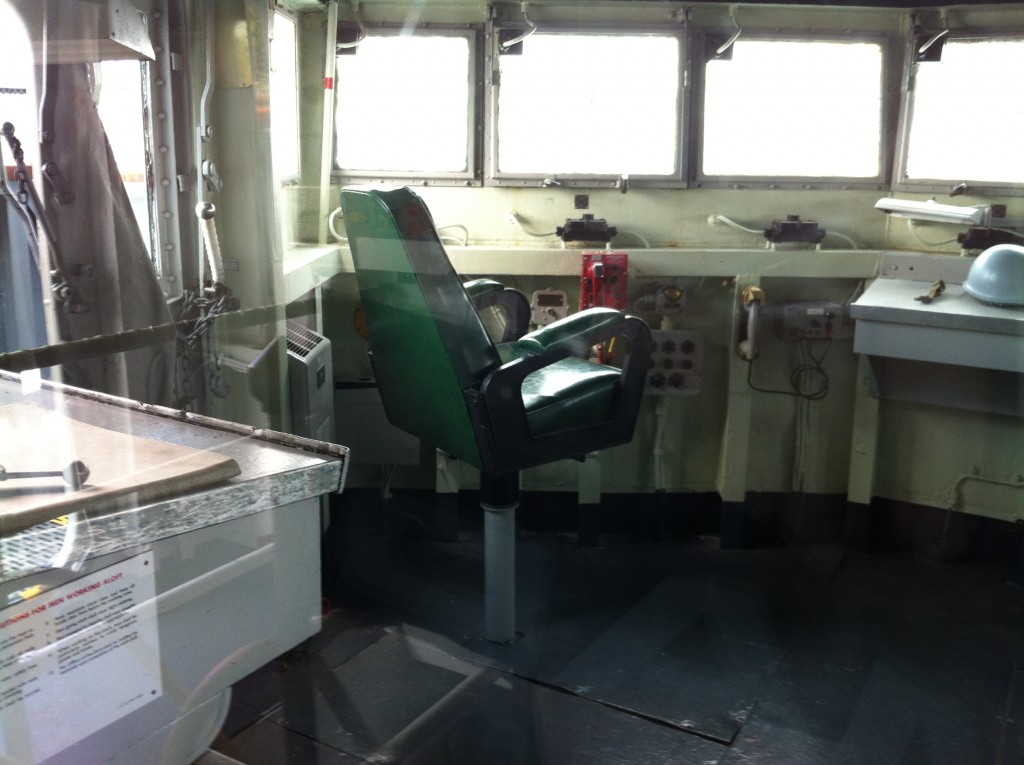
Port side of pilothouse, USS Joseph P. Kennedy, Jr., Battleship Cove, Fall River, MA, July 2014 (Photo: Sarah Sundin)
Later in World War II, destroyers had a Combat Information Center behind the pilothouse, which collected sonar, radar, and communications data to direct battle plans. [Note: picture below shows Vietnam War-era equipment on the USS Joseph P. Kennedy, Jr.]
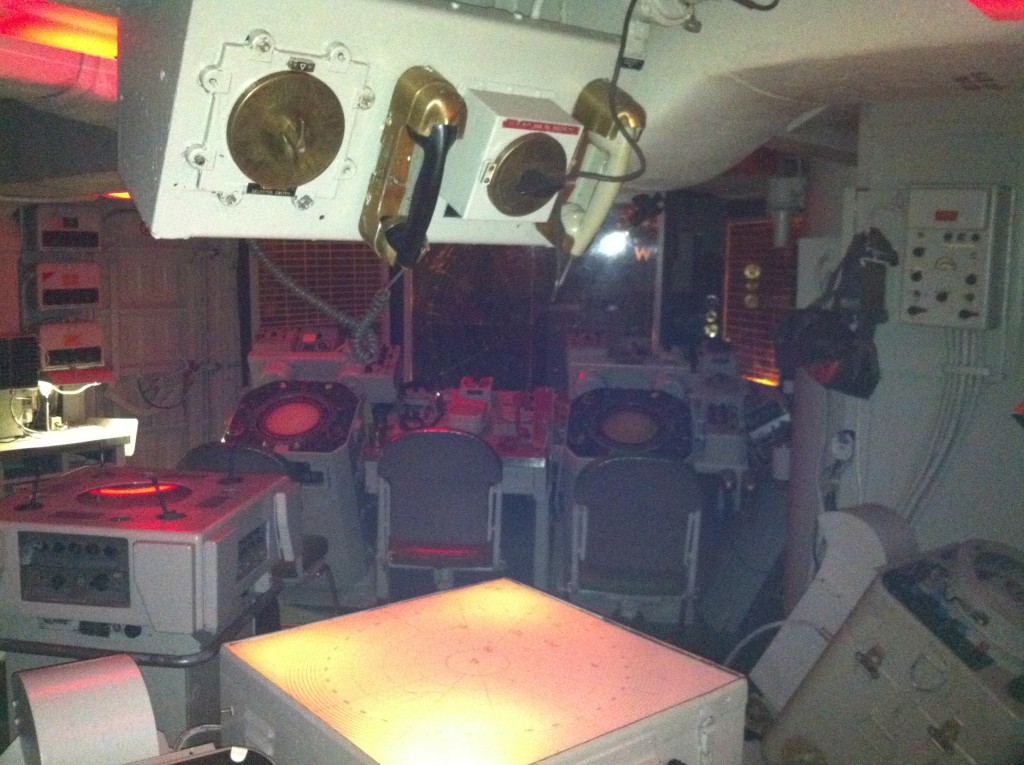
Combat Information Center, USS Joseph P. Kennedy, Jr., Battleship Cove, Fall River, MA, July 2014 (Photo: Sarah Sundin)
Engine and Boiler Rooms
Deep in the hull lay the engine and boiler (fire) rooms. The WWII-era destroyers had dual sets of boiler and engine rooms, which allowed the ship to maintain propulsion if damaged in combat.
In the boiler or fire room, giant boilers turned water to steam, which was pumped to the engine room. The steam powered the turbines, which turned the propeller shafts. The steam was then pumped to a condenser, sent through a deaerating feed tank to remove damaging gases, and circulated back to the boiler. Fuel oil powered the whole operation.
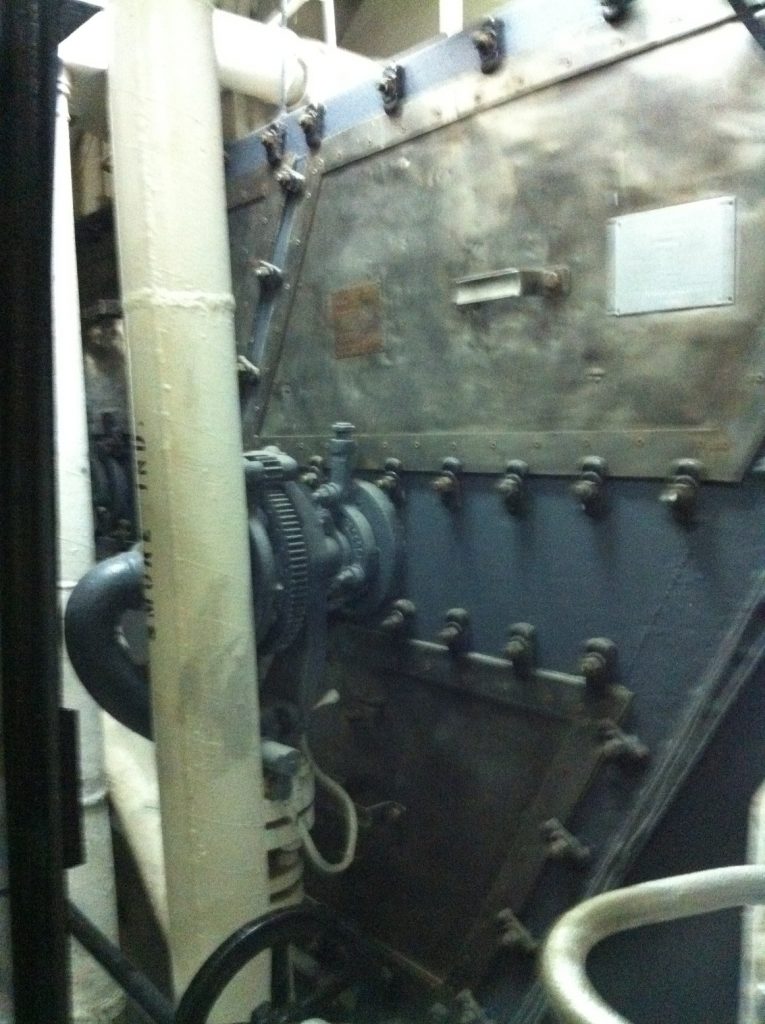
Boiler, USS Joseph P. Kennedy, Jr., Battleship Cove, Fall River, MA, July 2014 (Photo: Sarah Sundin)
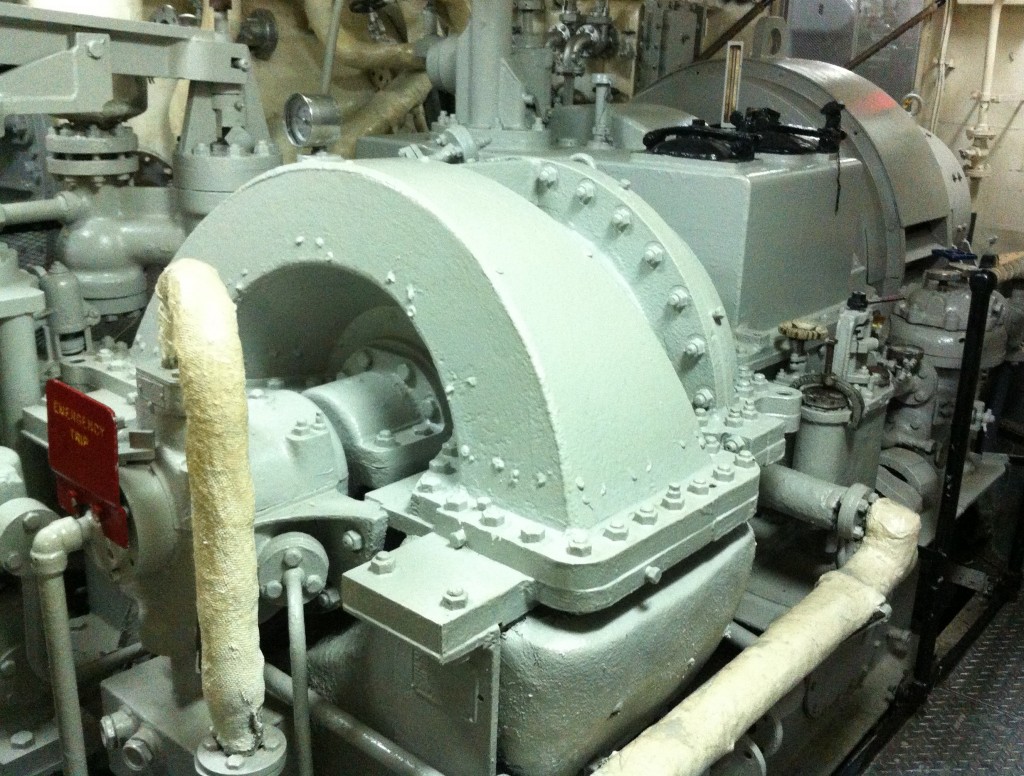
Turbine, USS Joseph P. Kennedy, Jr., Battleship Cove, Fall River, MA, July 2014 (Photo: Sarah Sundin)
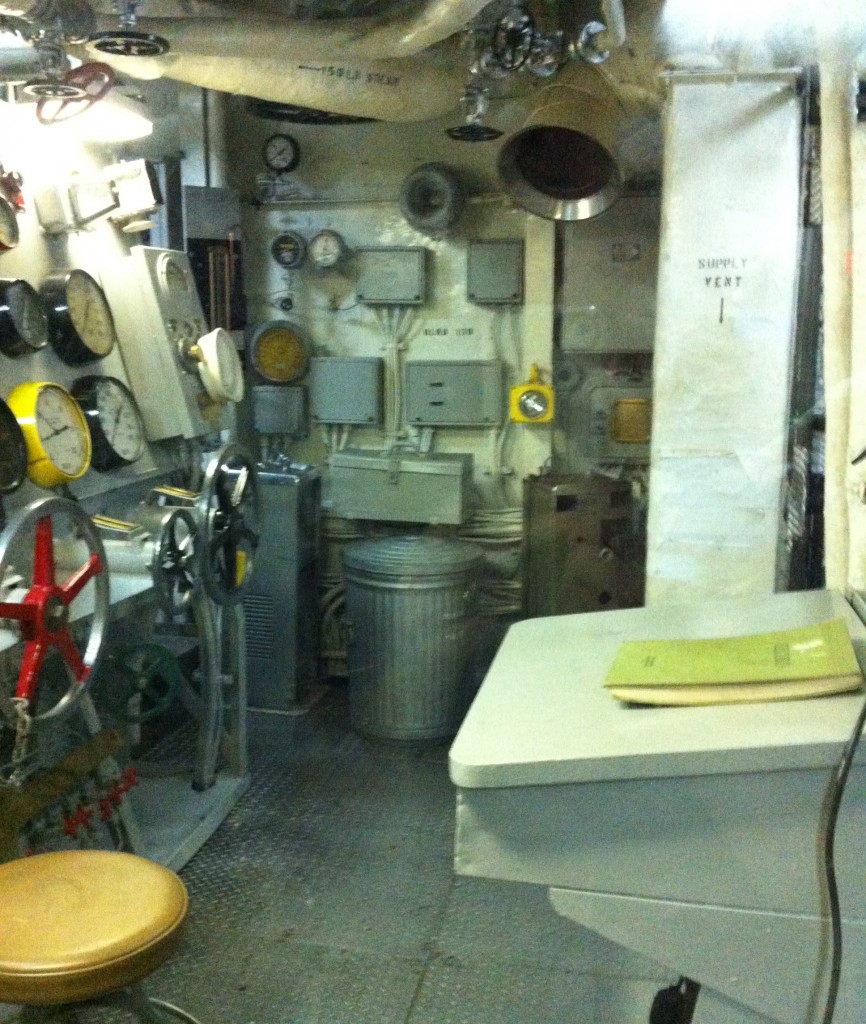
Engine room gauge board, USS Joseph P. Kennedy, Jr., Battleship Cove, Fall River, MA, July 2014 (Photo: Sarah Sundin)
Come see the reason for the destroyer’s existence—her armament.
Sources:
McComb, Dave. US Destroyers 1934-45: Pre-War Classes. Oxford: Osprey Publishing, 2010.
McComb, Dave. US Destroyers 1942-45: Wartime Classes. Oxford: Osprey Publishing, 2010.
Wiper, Steve. Warship Pictorial: USS Buchanan DD-484. Tucson, AZ: Classic Warships Publishing, 2009.
Harmon, J. Scott. U.S.S. Cassin Young (DD-793): A Fletcher Class Destroyer. Missoula, MT: Pictorial Histories Publishing Company, 1984.
Friedman, Norman. U.S. Destroyers: An Illustrated Design History. Annapolis, MD: Naval Institute Press, 1982.
Boston National Historical Park: USS Cassin Young. http://www.nps.gov/bost/learn/historyculture/usscassinyoung.htm
Destroyer History Foundation website. http://www.destroyerhistory.org
Tin Can Sailors Website. http://www.destroyers.org/index.html

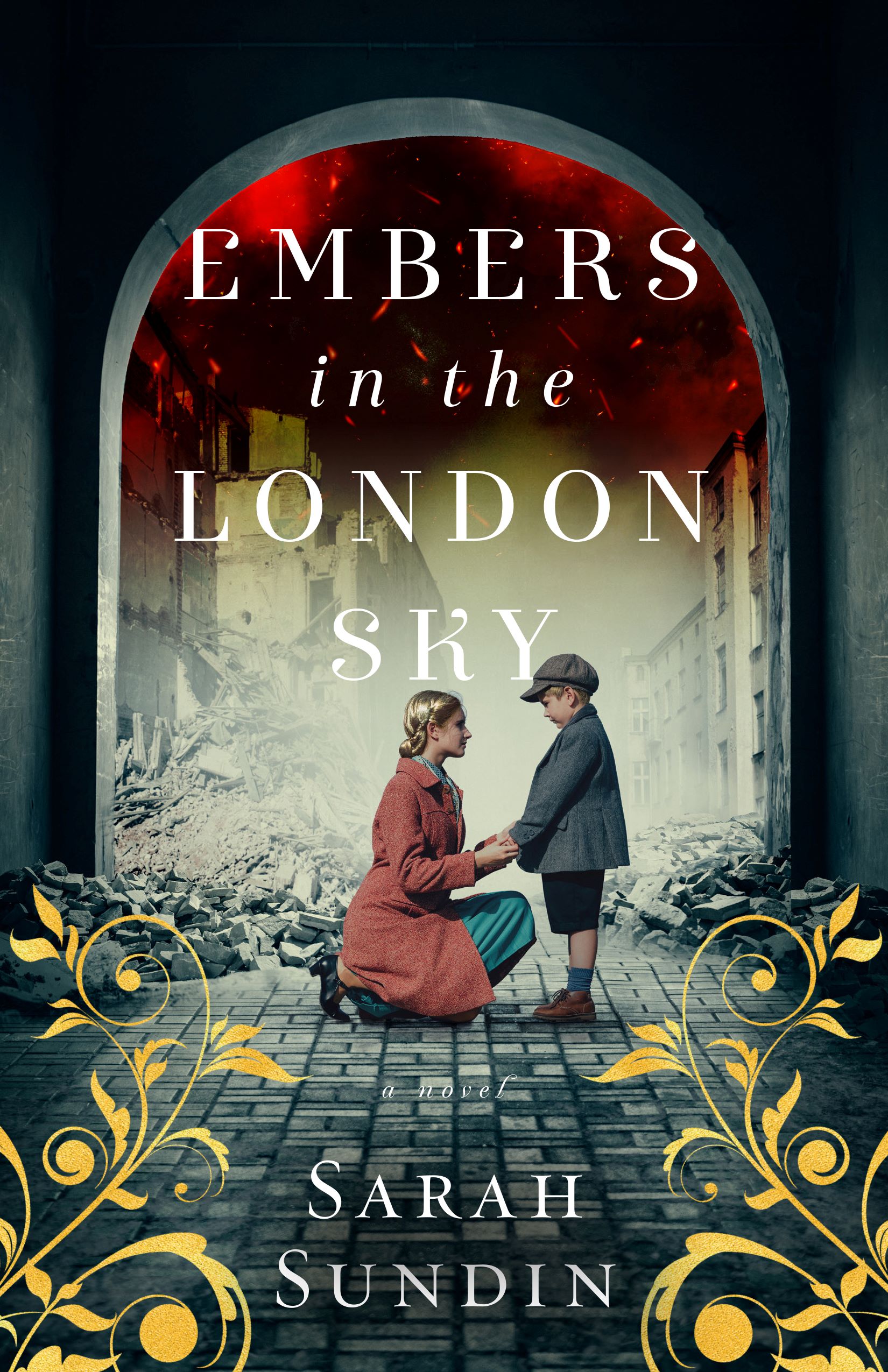
Thank you for sharing all this history!
Thanks, Marikay!
Thank you, so interesting.
Thank you, Lucy!
Sarah, I really enjoy these pictures! Thank you so much for sharing an important part of American history!
Thanks, Kelly! I’m happy to share!
Yikes! Talk about cramped and claustrophobic. Thanks for sharing these pictures. It makes Through Waters Deep feel that much more real.
It’s definitely cramped 🙂
I love the pictures and the history behind them! Thanks for sharing!
Thanks, Morgan!
[…] Part 2—Below Decks: living quarters and working stations. […]
Loved all the photos!
Thanks, Tami!
Sarah, one of the things I love about you, as a writer, is how you bring your characters to life by sharing their world through your blog. Seeing your setting here makes it easier to be drawn into your character’s lives when reading your novels. Thanks for putting in the hard work behind the scenes so we can enjoy the authenticity of every scene you craft in every chapter you create.
Thanks, Xochi! I’m a visual person, so seeing the sites really helps. And I keep referring to my photos while writing. My son teased me about taking so many pictures, but I’m glad I did 🙂
Love the pictures and the history. It really makes the story come alive! I think I will be dreaming about Destroyers and the Boston Naval Yard for weeks to come 🙂
Hi Sarah. very good post. My son was on a ship alot. He was in the Navy.
Was neat seeing the pictures. Thanks for the giveaway. Would love to win your book. Maxie
Appreciating the tour. The apron is adorable! Thanx for the giveaway.
I am thoroughly enjoying learning about the destroyers. All of these posts from your research trips have been helping to picture the locations in the book which I’m working on reading right now. I’m loving it! The apron is fantastic and I would love to win it. Thanks for the chance.
I live on the coast of Washington state and have had the opportunity to tour retired ships when they dock for short periods in Bellingham Bay or Whidbey Island. They certainly make me thankful for my freedom and those who are/were willing to make these ships their calling.